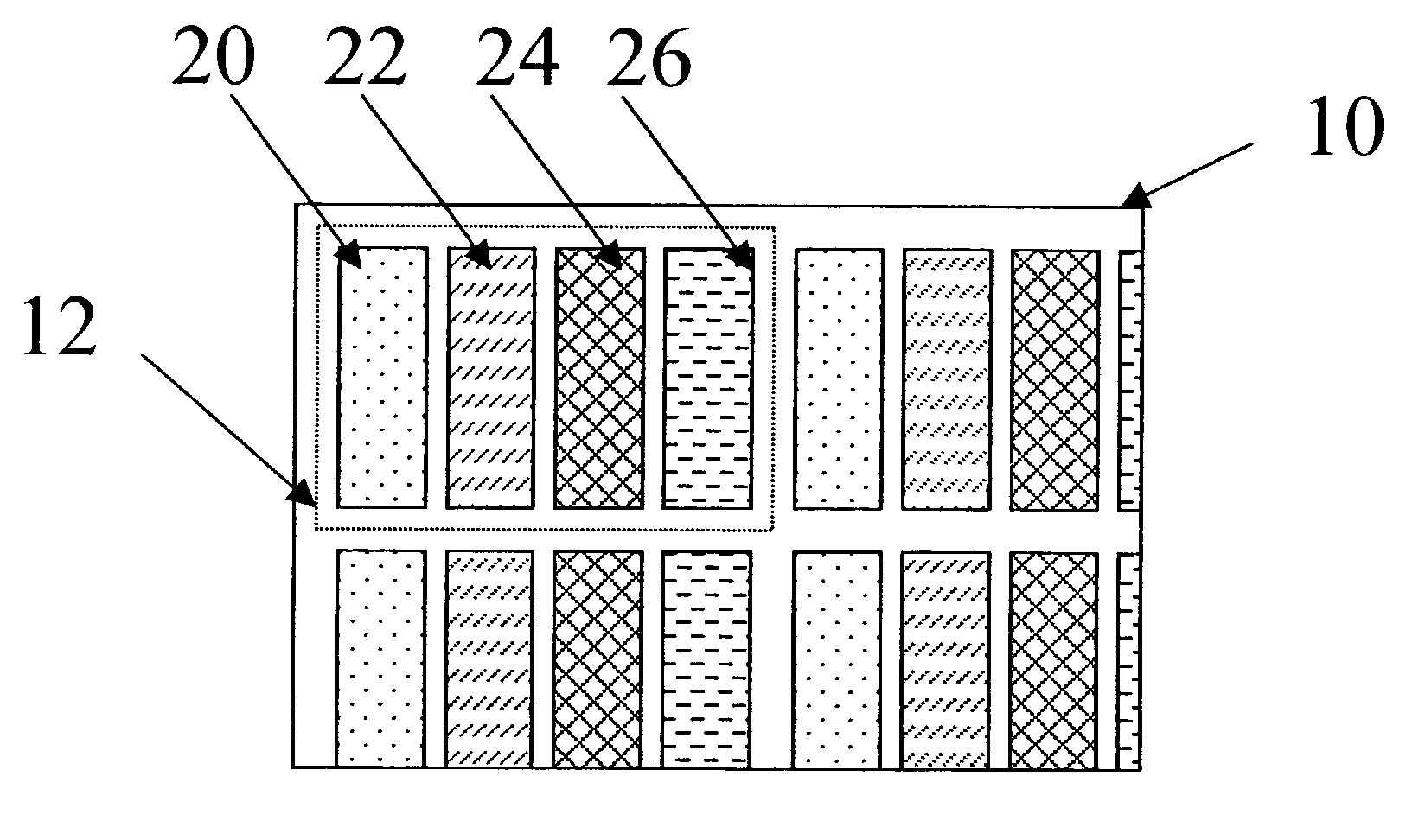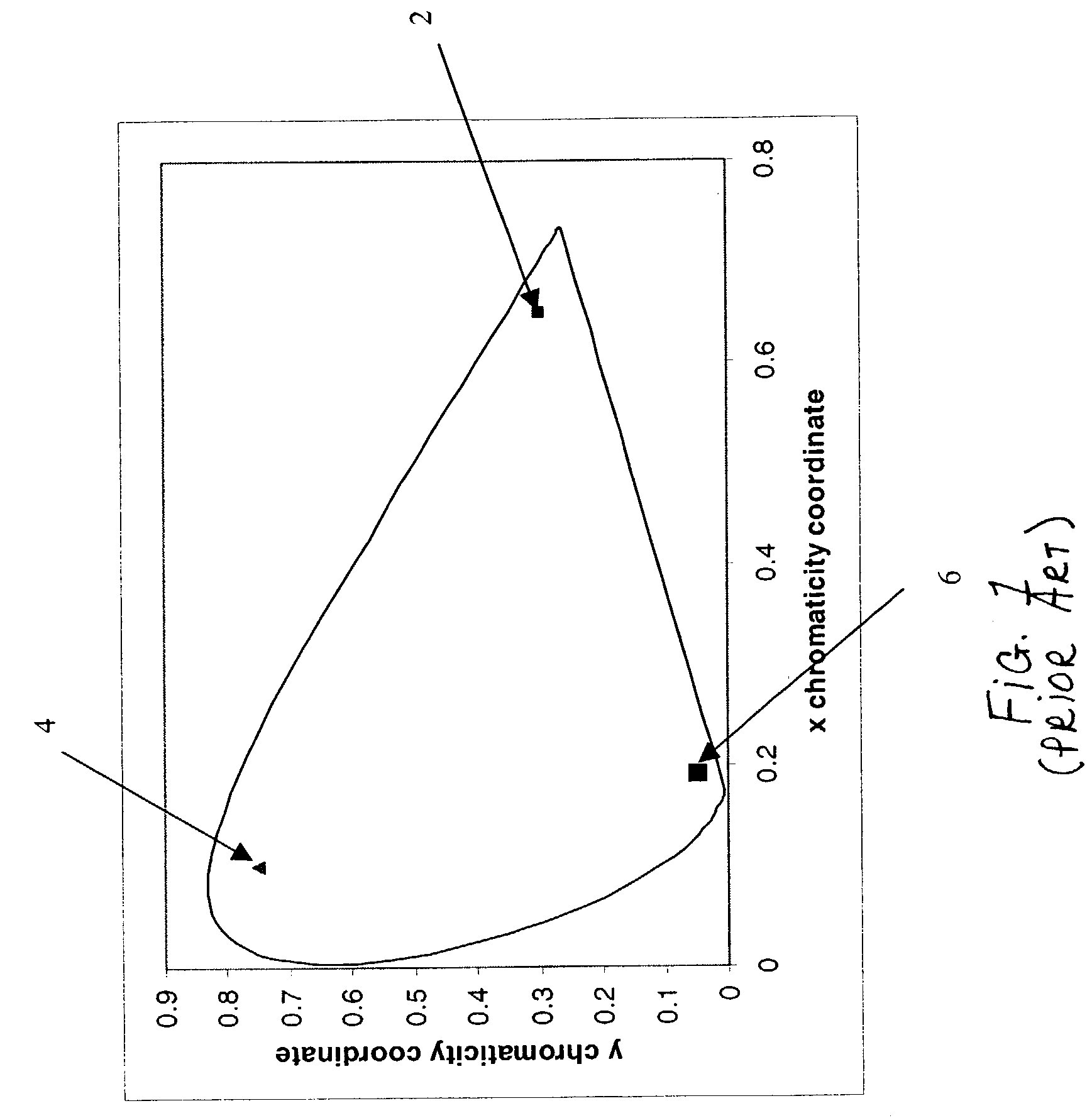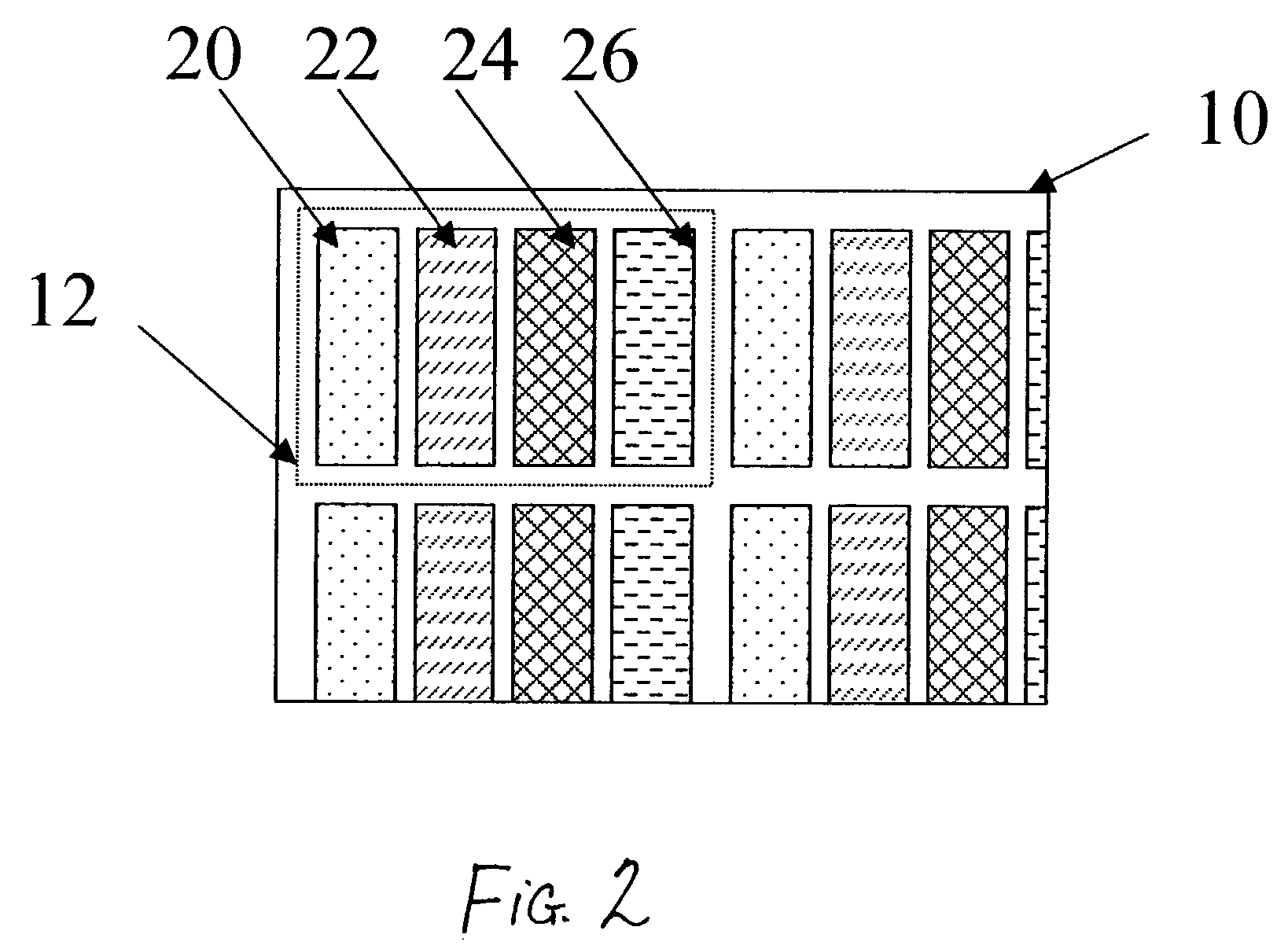Color OLED display with improved power efficiency
- Summary
- Abstract
- Description
- Claims
- Application Information
AI Technical Summary
Benefits of technology
Problems solved by technology
Method used
Image
Examples
example 2 (
INVENTIVE)
[0139]This same display can be constructed using a display structure according to the first embodiment of the present invention. In this example, it will be assumed that a white OLED will be added to the red, green, and blue OLEDs but that the total area of each OLED will be decreased to provide the same total fill factor. Additionally, it will be assumed that no color filter is placed over the white OLED and therefore the transmittance of this OLED is 100%. Finally, it will be assumed that the chromaticity coordinates for this white OLED matches the white point of the display.
[0140]Using the same approach as in the previous example, power values can be calculated for this display. The power needed to drive the display to each color is shown in Table 5 and this table can be compared directly to Table 4. Notice that the white OLED is to generate all of the luminance in the white and gray areas and therefore only the white OLED uses power when these colors are produced. Furt...
example 4 (
INVENTIVE)
[0147]This same display can be constructed using a display structure according to the second embodiment of the present invention. In this example, it will be assumed that a white OLED will be added to the red, green, and blue OLEDs but that the total area of each OLED will be decreased to provide the same total fill factor. Additionally, it will be assumed that the white OLED will have a power efficiency of 75 A / sq m. Finally, it will be assumed that the chromaticity coordinates for this white OLED matches the white point of the display.
[0148]Using the same approach as in the previous example, power values can be calculated for this display. The power needed to drive the display to each color is shown in Table 7 and this table can be compared directly to Table 4. Notice that the white OLED is once again used to generate all of the luminance in the white and gray areas and therefore only the white OLED uses power when these colors are produced. Further, since no color filte...
PUM
 Login to View More
Login to View More Abstract
Description
Claims
Application Information
 Login to View More
Login to View More - R&D
- Intellectual Property
- Life Sciences
- Materials
- Tech Scout
- Unparalleled Data Quality
- Higher Quality Content
- 60% Fewer Hallucinations
Browse by: Latest US Patents, China's latest patents, Technical Efficacy Thesaurus, Application Domain, Technology Topic, Popular Technical Reports.
© 2025 PatSnap. All rights reserved.Legal|Privacy policy|Modern Slavery Act Transparency Statement|Sitemap|About US| Contact US: help@patsnap.com



